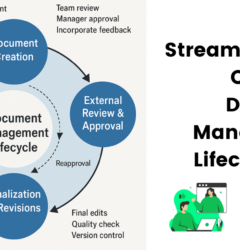Efficient Document Approval Workflow: Best Practices and Tools to Streamline Your Processes
25 May
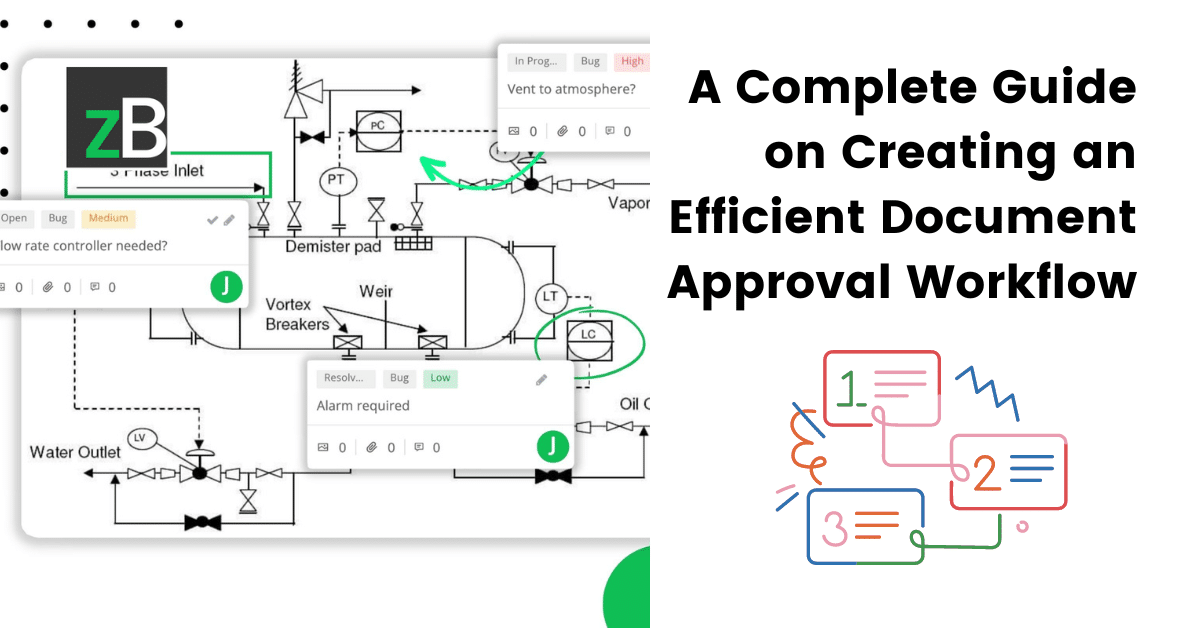
Table of Contents
ToggleRegardless of your industry and the type of document you need approval for, without a proper structure and a well-defined document approval workflow, you’re likely to experience delays, miscommunication, errors, costly fixes, and compliance issues during your document feedback and approval process – which can lead to decreased productivity and missed opportunities.
Efficient document approval workflows are crucial for organizations to ensure document quality, smooth operations, collaboration, and timely decision-making.
By reading this guide, you’ll better understand document approval workflows, elements involved, challenges, and best practices to implement. You will also learn how to create a document approval workflow.
What is a Document Approval Workflow?
A document approval workflow refers to the systematic process of reviewing, approving, and managing documents within an organization. It involves the flow of documents from one stakeholder to another – be it internal or external stakeholders like clients, ensuring the necessary approvals are obtained while maintaining transparency, accountability, and security.
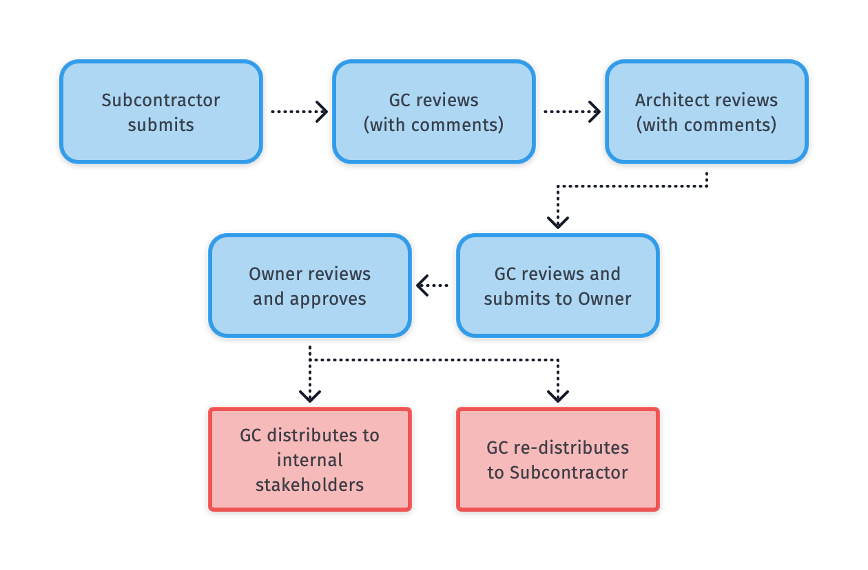
Efficient document approval workflows offer numerous benefits to organizations. They streamline processes, reduce manual effort, enhance collaboration and communication, ensure compliance and security, improve visibility, enable effective tracking and reporting, and prevent and avoid costly changes and risks.
Currently, most industries rely on manual and paper-based methods for their document approval workflows. There’s an absence of automation, inefficient processes, security concerns, and a lack of effective communication and collaboration.
The construction industry, for instance, is one industry that deals with loads of documents that need approval before construction can commence. Yet some AEC teams rely on manual document approval workflows which usually leads to delays, inefficiencies, and costly changes, among others.
Several studies, including this review on the delays and conflicts for construction projects and their mutual relationship, as well as this article on the causes of delay in large construction projects, show that document approvals – especially shop drawings – form part of the factors that cause delays in construction projects.
Consequently, it is safe to say that manual/traditional workflows for document approvals are not helping organizations achieve optimum results.
Hence, the need for efficient document approval workflow, which mainly relies on digital/automated workflows and tools. Let’s look at a paragraph from The Future of Work in the Digital Age report by Gartner in 2017 – which still holds true today:
Organizations that use digital document approval processes reduce their document approval errors by an average of 50%. This is because digital approval processes automate many of the steps in the approval process, such as routing documents to the right approvers and tracking the status of approvals. This helps to ensure that documents are approved in a timely manner and that all of the required approvals are obtained.
Gartner, 2017
How to Create a Document Approval Workflow
Document approval workflows can take different forms depending on factors like the industry, organization, type of document, number of approvers, urgency of the document, and risk level. Some documents may go through sequential approvals, whereas others will have parallel approvals.
In sequential approvals, documents are sent to one approver at a time, in a specific order – sequence. Once the first approver has approved the document, it is sent to the next approver and the process continues until the document has been approved by all the required approvers.
On the other hand, parallel approvals allow multiple approvers to review and approve documents at the same time.
Both parallel and sequential approvals have their pros and cons so you need to weigh your options and choose the most efficient and convenient.
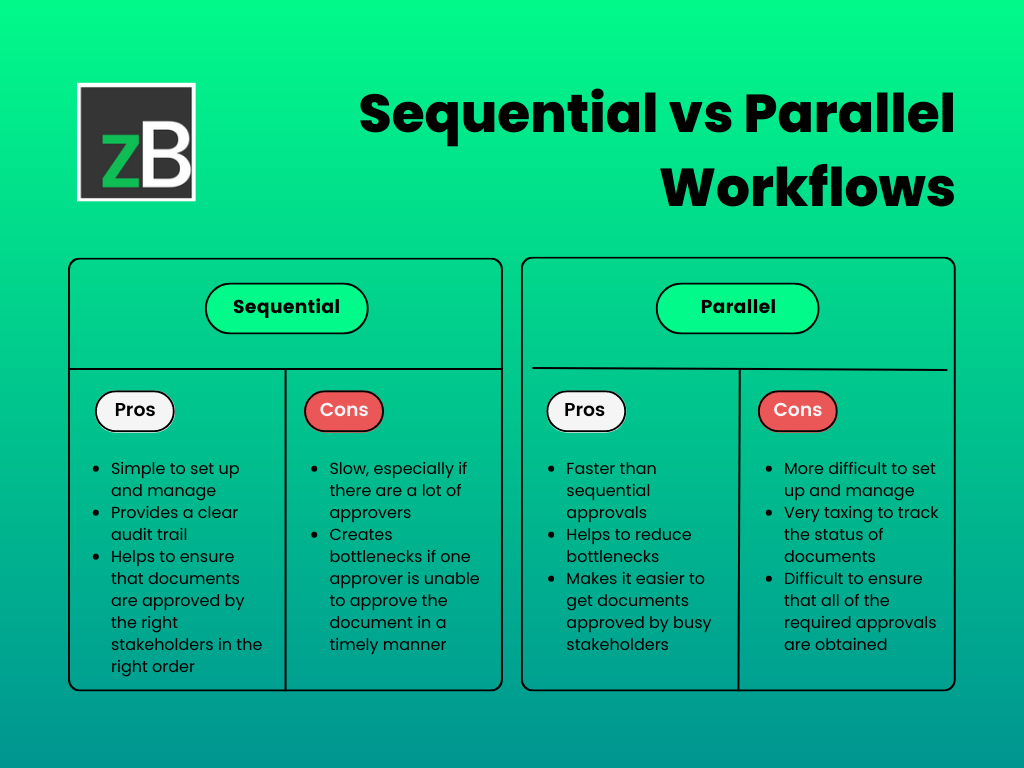
Whether you choose a parallel or sequential document approval process, your workflow is likely going to include these steps:
1. Requester – creates the document and uploads it in the organization’s document management system for review and approval.
2. Project Manager – creates a project and uploads the document in a document approval software. If the document approval tool integrates seamlessly with the document management system, the project manager will not have to upload the document(s) again.
3. Project Manager – adds/invites internal and external stakeholders to collaborate on the project.
4. Reviewers and Approvers – receive email invitations to join the project and review, give feedback, resolve issues, or sign off on the document.
The document then moves through the workflow, with designated reviewers reviewing and providing their input using document approval tools available. (We recommend a document approval software like zipBoard – see below).
5. Project manager – reviews comments and feedback from reviewers, triages tasks, and assigns them to appropriate stakeholders to address/resolve.
6. Approvers – can take the final look and sign off or mark it as approved.
Watch this video to get a complete overview of an efficient construction submittal review process in zipBoard:
Elements of a Document Approval Process
While document approval workflows can vary depending on the nature of the project, they typically encompass several key elements which work together to facilitate effective collaboration and decision-making throughout the approval process. Below are 9 key elements of document approval workflows with corresponding questions to help you determine if you’re on the right track:
- Submissions – Where will stakeholders submit/upload documents?
- Assign approvers – Which stakeholders will approve the documents and at which point?
- Set permission levels – What level of permission does each stakeholder have?
- Set due dates – What is the deadline or due date for each document?
- Create a record or log – Where will comments be recorded?
- Automatic alerts and notifications – How will stakeholders receive notifications about tasks and comments directed to them?
- Task lists – Where will tasks be assigned and how will stakeholders see their tasks?
- Signature – How will approvers sign off on documents to indicate the document has been approved?
- Reports – How will you report on the project’s progress at each point in time?
By getting answers to these questions, you will be able to ensure an efficient document approval process. Let’s look at some best practices to help.
Key Roles of a Document Approval Workflow
Depending on the company and industry, both internal and external stakeholders play distinct roles in the document approval process.
For AEC teams, for example, during the construction submittals process, clients and vendors participate in the document approval process during the pre-construction, construction, and closeout phases. Their roles usually encompass reviewing and approving documents as well as providing feedback on the documents. Some of the documents they review include submittals, specifications, shop drawings, final plans, and as-built drawings.
Here are 4 key roles needed for an efficient document approval workflow:
- Requester – the owner/creator of the document. The requester is the one who’ll submit the document and make it readily available for review. The requester can be one or more persons – depending on the type of project.
- Project Manager – the one who’ll set up the approval workflow, invite stakeholders, assign responsibilities, and monitor the progress/status of documents.
- Reviewers – individuals who’ll review the documents and provide their feedback for changes to be made. Reviewers will usually include internal team members and clients – depending on the type of project.
- Approvers – stakeholders who will review the feedback by reviewers and sign off on the document to proceed to the next stage or reject it for further review and corrections.
10 Best Practices to Streamline Your Document Approval Workflow
Determine Approval Criteria and Requirements
Identify the criteria and requirements for document approval based on the project’s needs and regulatory standards. This ensures consistency and clarity throughout the workflow.
For instance, if you’re working on construction submittal approvals, there will be industry standards, building codes, and other criteria you must pay attention to during the document approval process. So you need to have those and ensure you’re on the same page with your team.
More so, regardless of the document, your organization must have certain requirements or standards for documents to meet. So make sure you have those criteria documented for easy reference.
Establish Standard Operating Procedures
Define and document standard operating procedures (SOPs) that outline the step-by-step process for document approval. This document will serve as a guide for stakeholders and will help reduce confusion and improve efficiency. Once everyone knows how the process works and what they need to be doing at each point in time, this will help reduce challenges.
Identify Document Types and Categories
Depending on the type of project you’re working on, you need to identify and categorize the documents accordingly to prevent any confusion during the approval process. This will also help assign appropriate stakeholders, set permissions, and streamline the approval process.
Identify Key Stakeholders and Assign Responsibilities
Make sure every stakeholder is aware of their roles and what they will be doing at each stage in the workflow. Clear roles and responsibilities ensure accountability and smooth coordination. Check this help doc for assistance on how to assign roles and responsibilities to stakeholders for document approvals.
Define the Process and Create a Workflow
Design the document approval workflow by mapping out the sequence of actions and interactions between stakeholders. Utilize workflow management tools to create visual representations and automate the process. This will help reduce costs and improve efficiency. Examples of workflow tools to help aid in your document approval workflow include Zapier, Jira, and Microsoft Power Automate.
Implement Automation Tools
Leverage automation tools and software solutions to streamline the document approval process. These tools automate tasks, send alerts and notifications, track progress, and centralize document management.
Tools like Microsoft Teams, Slack, and Zoom can help with effective communication. Asana, Trello, Wrike, and Jira can help with project and task management. Adobe PRO, Bluebeam, Marker.io, and zipBoard can help with document approvals.
The key here is to select a tool that integrates well with other tools – especially your document management system.
Turn on audio👆
Enhance Collaboration and Communication
Promote collaboration among stakeholders by providing them with a centralized platform for document sharing, commenting, and discussion. Encourage effective communication to minimize delays and misunderstandings.
The tools for communication and collaboration we mentioned in the previous point can help in this regard.
Ensure Compliance and Security
Implement security measures to protect sensitive documents and ensure compliance with relevant regulations. Use encryption, access controls, and audit logs to maintain confidentiality and integrity.
Monitor, Track, and Report Logs
Assign someone on your team to regularly monitor the document approval workflow, track progress, and generate comprehensive reports. When you analyze data and performance metrics you can identify bottlenecks and areas for improvement.
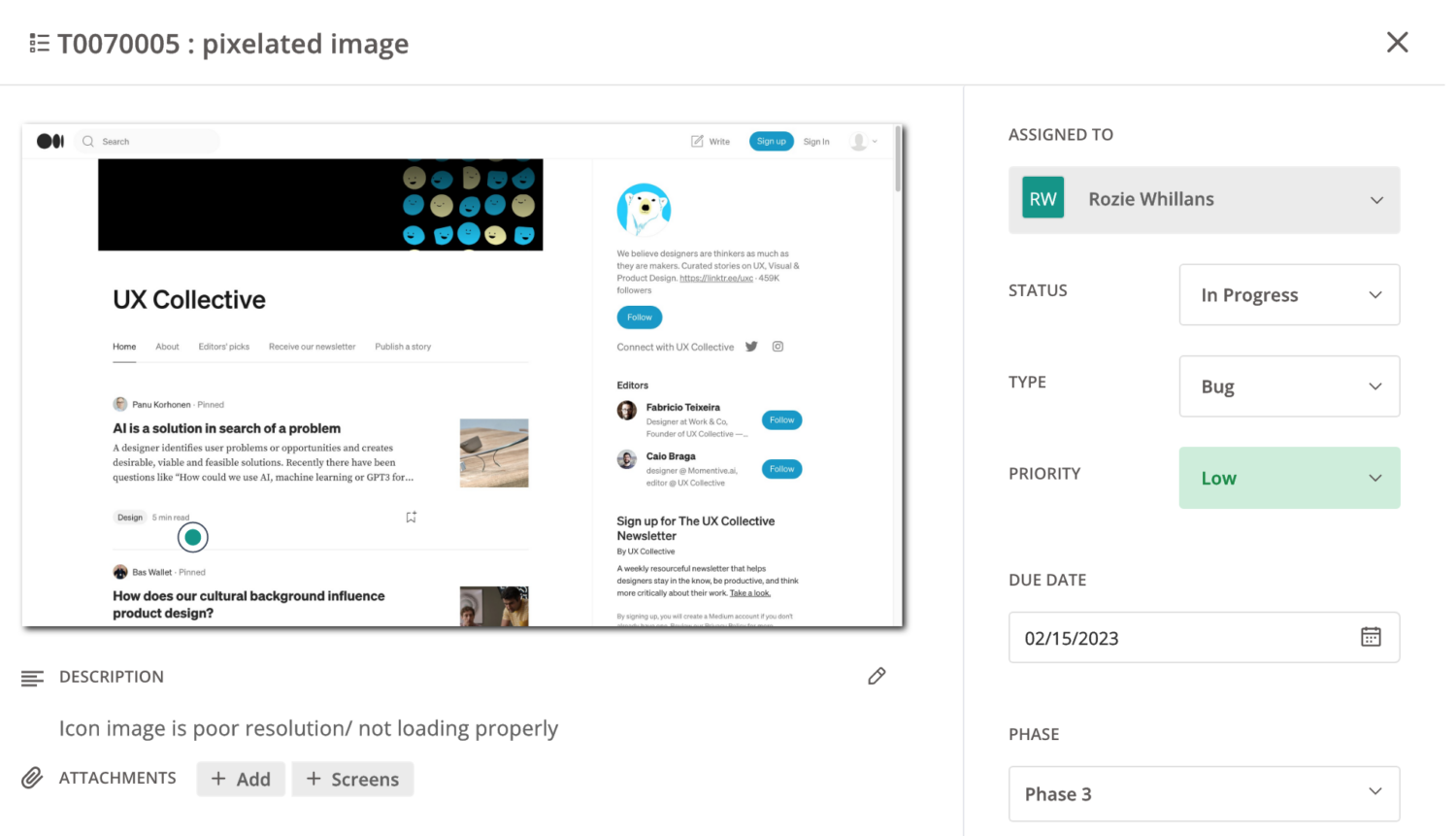
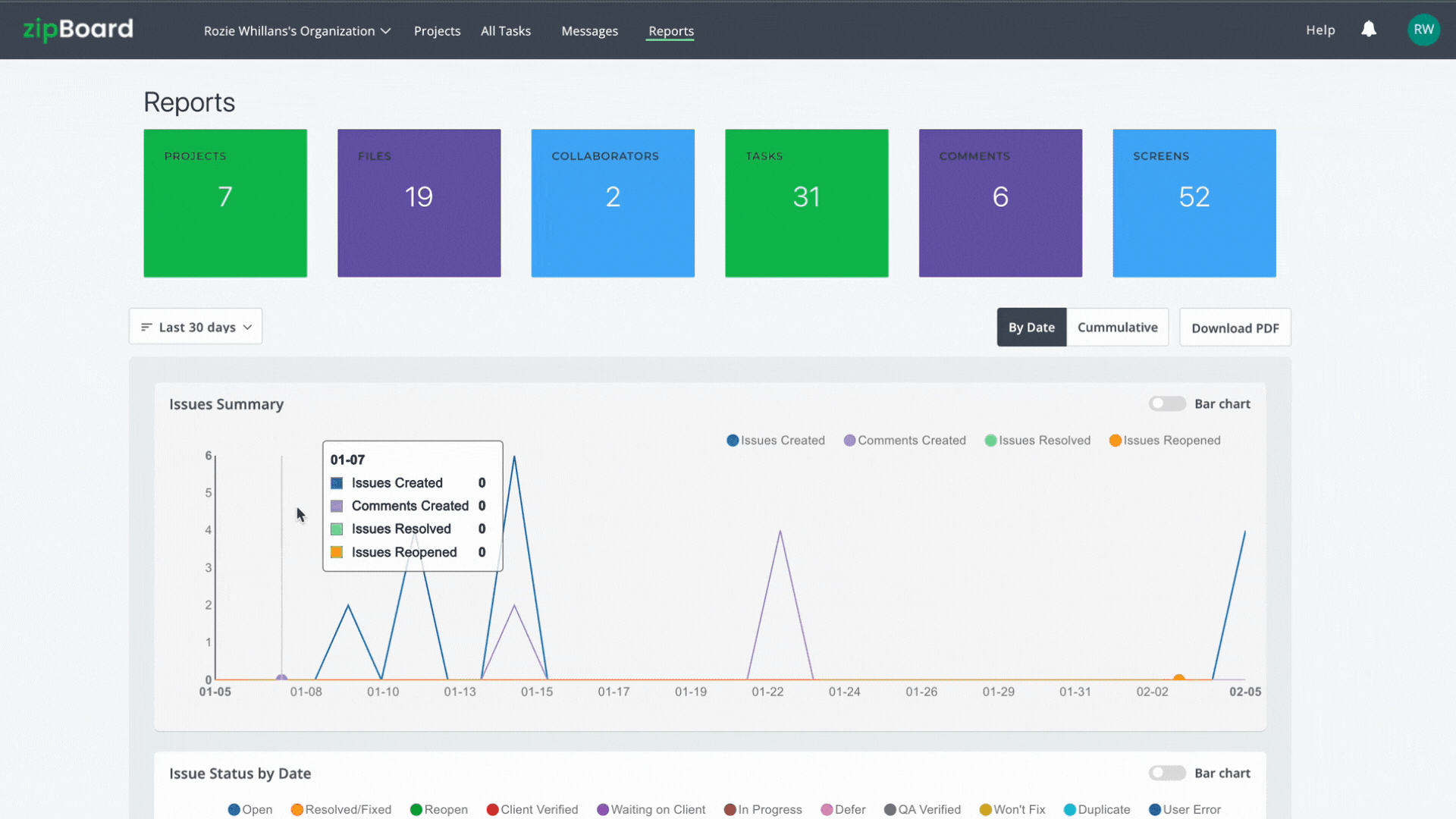
Training and Change Management
Provide training and support to all your project stakeholders to ensure their familiarity with the document approval workflow and tools.
Automate Your Document Approval Workflow with zipBoard
zipBoard is a document approval software with visual review and annotation features that allows you to review PDFs, zip files, and other document types in a single platform. The platform is easy to use and it allows both internal and external stakeholders to collaborate in one place.
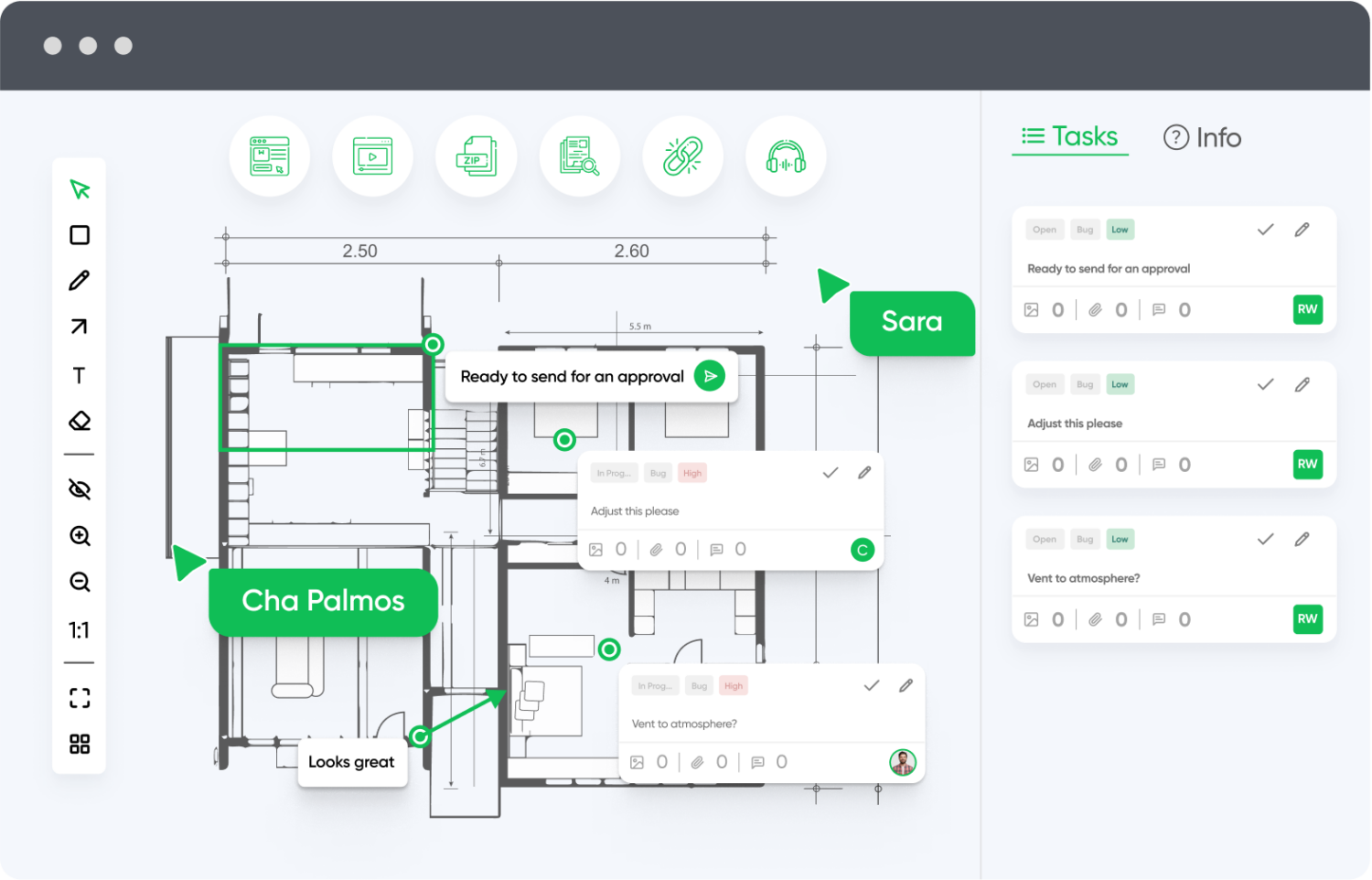
In 4 easy steps, you can set up a document approval workflow in zipBoard ⬇️Learn more here →
Sign up for the free trial and create a project
Set up your workflow using phases and add documents
Invite internal team members and external stakeholders
Review and approve with markup tools and customized approval stamps
The good news? zipBoard integrates seamlessly with document management systems, ERPs, and cloud stores, so you can collect feedback and manage document reviews and approvals from within your DMS without having to download the documents.
This is in contrast to tools like Adobe PRO where you have to download the documents from your DMS, upload them in Adobe PRO for review, and download the current version to upload in your DMS. Describing this process alone is cumbersome – so you can imagine the execution.
By integrating zipBoard into our submittal review process we were able to significantly speed up our pre-construction review phase and hit our construction field goals on time.
Save Up to 30% on Document Approvals with zipBoard
Start your free trial or book a demo today so that we can create a tailored solution for you.
Book DemoStart Free TrialAuthor’s bio:
Dorcas Kpabitey is a Content Marketing Specialist at zipBoard. She began her content marketing journey alongside her BA in Political Science and Spanish at the University of Ghana. If she is not tapping away at her keyboard or spending time on Twitter and LinkedIn, she spends her day reading articles, newsletters and books.
Related Post
Recent Posts
- Best Practices for Efficient Document Reviews and Collaboration December 18, 2025
- MEP Document Management: How to Streamline Reviews & Avoid Rework October 3, 2025
- What Is Online Proofing Software? And Why Content Review Breaks Without It July 11, 2025
- How Laerdal Medical Cut eLearning Review Time by 50% with zipBoard’s Visual Review Tool July 9, 2025
- Why Your Team Needs a Content Feedback System (Not Just Comments in Docs) May 28, 2025
©️ Copyright 2025 zipBoard Tech. All rights reserved.
